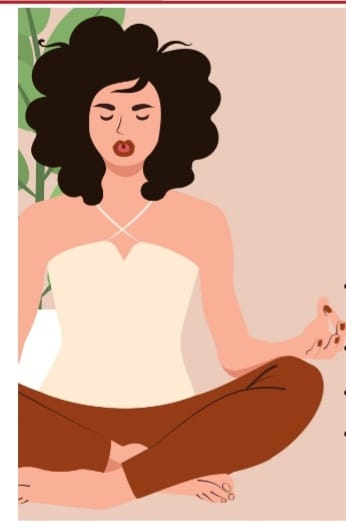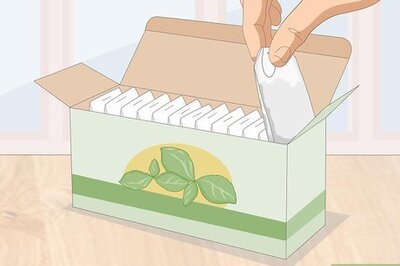
views
A good time to do this would be before sunset or before the evening-tea break. Preferably, sit in a ventilated place for the practices; else, your own chair will also do.
Usually, Pranayama is advised after the person has practised Asana, and also regularly practices Kriyas or cleansing techniques. However, healthy and fit individuals can do limited rounds of these Pranayama directly. The one prerequisite is, you must have not eaten anything for two hours.
THE SIMPLE BREATHING SEQUENCE
You can wrap this up in less than 10 minutes.
Position yourself: Sit on a chair, feet on the ground, the back straight and shoulders relaxed. Adopt ‘Cin Mudra’ by touching the tips of forefingers to tips of respective thumbs, and place hands comfortably on the thighs close to the knee. Close the eyes and relax the body completely by breathing in and breathing out once.
Warm up: Do three rounds of Abdominal breathing, i.e. inhale slowly and deeply while bulging the abdomen, and exhale completely. Follow with three rounds of Thoracic breathing, by expanding the chest area with inhalation, and collapsing the chest while exhaling. Follow with Clavicular breathing, i.e. lift the collarbone with inhalation, and lower it back with exhalation. The inhalations must be slow, deep, continuous and smooth; exhalations should be slow, non-jerky and complete.
With this, we have been able to breathe to full lung capacity, and if you take a few seconds to observe yourself, you would already be feeling light.
Now we move to the two relaxing and energising Pranayamas — Sitali and Bhramari.
SITALI PRANAYAMA OR THE COOLING BREATH
Sitali Pranayama is a ‘cooling pranayama’ that’s perfect to counter the built-up `Rajas’, or high-activity state.
Coincidentally, here the tongue is rolled up like a cigarette through which the breath is taken in. A perfect substitute!

• Make ‘Cin Mudra’ with the thumb and forefinger, hands placed casually on the thighs.
• Stretch out the tongue and roll it into a tube. Suck in air through the tube slowly and smoothly. You will feel a stream of cool air go down your throat and fill your lungs.
• Close the mouth and exhale through the nostrils completely. Do five rounds of this practice.
You’ll experience calmness and tranquillity immediately, as tensions are released in the muscles as well as in the mind. Also, an overall cooling in the body, including the eyes, the ears and insides of the head, can be felt. An added benefit of the cooling is it helps alleviate thirst and hunger for some time, particularly useful for those extra workload days!
(Note: Avoid Sitali in case you have low BP or any kind of respiratory troubles.)
BHRAMARI PRANAYAMA OR THE BEE BREATH
Bhramari Pranayama is the ultimate nerve-soother and cerebral-tension reliever.

• Adopt ‘Cin Mudra’ as above and close the eyes.
• Place the tongue lightly on the upper palate and inhale deeply.
• Exhale completely, making the sound of a humming bee — a `nnn’ sound — in a low-pitch. Feel the vibrations in the head, providing a massaging effect through the body.
• Do five rounds of this pranayama to ease mental stress, agitation and frustration.
Take a minute and sit calmly after these two practices, with eyes still closed, and experience the changes. Then gently open the eyes and go about the rest of the day.
Practised regularly, these breathing practices will help reduce anger, anxiety, blood pressure and other psychosomatic problems.
Other than relieving work pressure, these pranayamas have their own additional set of benefits: healing of tissues, curing skin and digestion problems, balancing the autonomic nervous system, expansion of awareness and spiritual growth.
Remember, it is important to first learn Yoga techniques from a trained teacher. Do these slowly, with deep inhalations and complete exhalations. Even though this is a short session, do ensure you are not under tension while doing the practice.
The author is a journalist, cancer survivor and certified yoga teacher. She can be reached at [email protected].

















Comments
0 comment